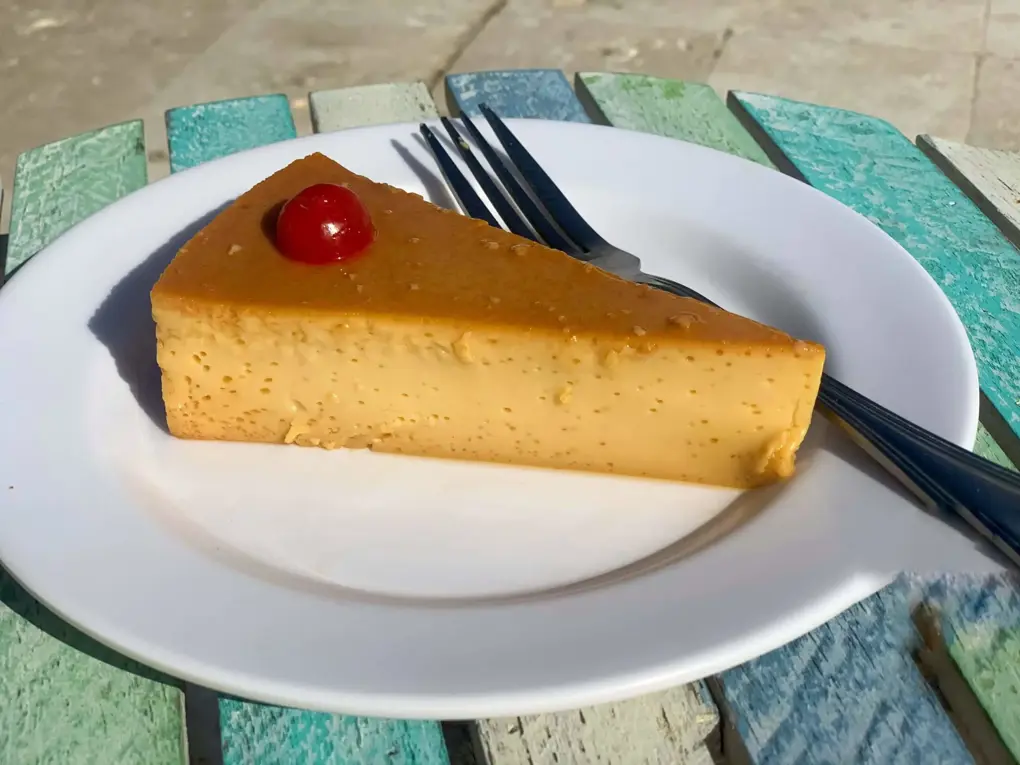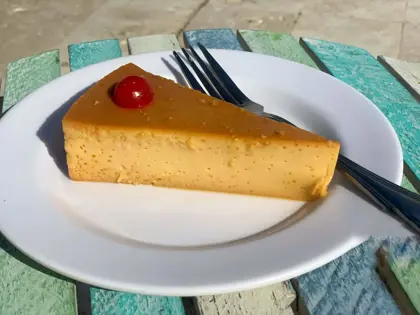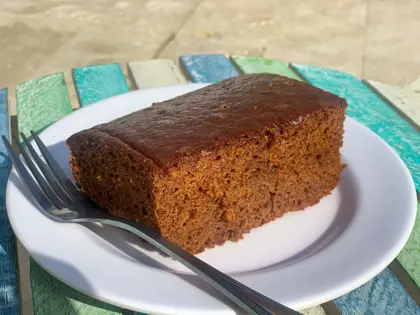Dushi Island
Nothing quite completes a meal like a memorable dessert, and islanders are quite fond of their native sweet treats. The word dushi is a term of endearment in Papiamento; the same as calling someone “honey,” or “sweetie,” and also does double-duty when describing a wide variety of delightful desserts and snacks. Some have a very important place in Aruban society regarding milestone lifetime events.
A vital and absolutely de rigueur ritual at any Aruban wedding is the distribution of small, beautifully wrapped squares of bolo preto (black cake) named for its color. It is made from prunes and raisins that are soaked in rum and brandy for a minimum of six months to a year. Eating a few pieces of this rare treat can certainly add to the merriment of the occasion! Bolo preto is believed to have come to the island with immigrants from Barbados and the Cayman Islands who sought work in the refinery in the early 1930s, building up the population of San Nicolas.
On the other side of the spectrum, a purely Aruban beverage is chocolati pinda. It has a thick, cocoa-like consistency, but is made from peanuts. The nuts are finely ground and mixed with milk, sugar, cinnamon, and sometimes, star anise. This is traditionally served during the family gathering after a funeral.
Another truly local treat is drigidek, a sweet gingerbread. It originated in the days when the man of the family had to take an all-day trip by donkey cart from San Nicolas to the food markets in Oranjestad. Their wives would send them packing with drigidek, which in those times was more substantial: spicy bread that would sustain them through their journey. Over the years it has evolved into a sweeter, but still dense, cake. It can be found at most snack shops and bakeries and is considered an on-the-go breakfast staple along with pan dushi. Almost always a round loaf, this is egg bread laden with raisins, and occasionally includes candied fruit.
Though many of Aruba’s most popular desserts, such as bolo di tres leche, (three milk cake) and quesillo, an extremely rich, thick flan (egg custard) are regional legacies of the Spanish occupation; another that is wholly unique to Aruban cuisine is kashupete. This cake, made from finely chopped cashews, is most often served around Christmas, as an authentic version is quite laborious to produce. Prepared with milk, rum, and brandy, the traditional recipe calls for ground whole sugar cane as the proper sweetener, though modern cooks now commonly use brown sugar. You will usually find this rich dessert offered at the holiday buffets in most resorts and should definitely give it a try. Aruban Chef Joselito Alberts – during his time working at Disney World – presented kashupete as his entry in Disney’s annual worldwide cooking contest among their culinary employees. The judges were so impressed, they decided to add kashupete to the menu at The Crystal Palace in Magic Kingdom Park.
Cashew and almond trees proliferate on Aruba, so, their bounty is often used in island treats, such as djente di cacho (teeth of the dog). This is a brown sugar and molasses brittle originating on Curaçao, which is rich with both these nuts. The fruit of the cashew tree produces a tangy, refreshing beverage favored at the open-air barbecues that are a way of life here.
Djente di cacho will usually be displayed at street fairs alongside chupa bebes (handmade lollipops), sunchi, which are meringue cookies and means “kiss,” and cocada, a coconut and milk candy of varying colors. The candy has a consistency of sugary (not chewy) fudge, either plain or combined with the shredded coconut. More favorites at the holiday snack stands are teart (tart) a round pastry inlaid with sections of prune purée or festively colorful cocada, sold along with dushi di tamarind. The latter is a candy made of tamarind fruit that has been crushed, combined with granulated sugar, and rolled into a perfect ball, which is then coated with more sugar. Extensive sweetening is required to foil the fruit’s extreme tartness.
Tres leche is a dessert item not only on Aruban restaurant menus, but also throughout the region. Every cook has their own recipe for this classic dish that arrived with the Spaniards, often affected by colonial influences that followed. The base is pan lefi, a plain sponge cake widely sold on Aruba in local bakeries and snack shops. The cake is soaked in whole, evaporated, and condensed milk, hence the name “three milk cake,” and the ever-present Caribbean flavoring agent: rum. Extremely rich, it is traditionally topped with a meringue that is flamed, much like baked Alaska. In these modern times, it is more often found topped with icing or whipped cream.
If you have a sweet tooth, you will certainly find an epicurean adventure among the island’s favorite treats. The premier places to sample these are the regularly scheduled street fairs during national holiday events, and the weekly Bon Bini and Carubbean Festivals in Oranjestad and San Nicolas. Don’t miss these opportunities to enjoy a true taste of regional cuisine.
Aruba, however, has become well known for its fine dining at any of 300 restaurants serving food from every corner of the globe. According to the last census, there are over 70 ethnic and national groups that have made Aruba their home, introducing their traditional desserts to the community. A plethora of internationally renowned chefs also staff many first-class eateries. Menus have expanded, and discerning palates can find anything from tiramisu to Key lime pie, and crêpes suzette. Whatever your preference when dining on Aruba, you definitely want to leave room for dessert!
By Rosalie Klein


